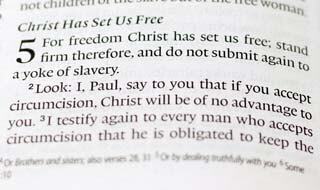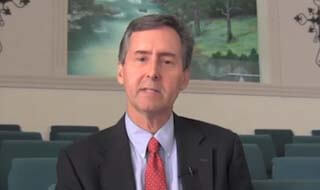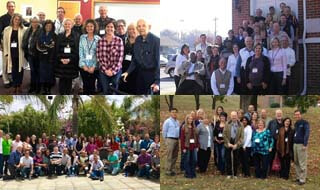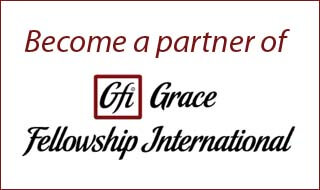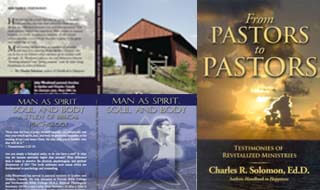IV. WE MUST PERMIT SPONTANEOUS DEVELOPMENT OF THE CHURCH
Mark 4:16-19 illustrates how churches take root, grow and develop their different ministries spontaneously, with a minimum of control on the part of the workers responsible. We recognize the Lord Jesus Christ’s supreme authority over all churches and theological institution. Where he reigns the Church develops spontaneously. Under His sole command, the Church grows and multiplies in a manner natural to herself. A normal, healthy congregation must grow and multiply. That is her very nature, built into her by the Almighty Creator.
We find in living things four principles common to created life:
1) All, even the simplest plants, have the capacity to reproduce after their own kind.
2) All organisms have a sensitivity to react to their environment
(In even the viruses a primitive intelligence discerns what foreign particles it can assimilate and what it must repulse. More complex animals learn and reason. Man has the dangerous ability to choose between right and wrong and the blessed capacity to worship God and appreciate His divine attributes.)
3) All but the most basic forms of life differentiate their cells into diverse organs; this specialization enables the plant, animal or person to do increasingly complicated activities.
4) Most organisms bear fruit or provide something useful for others besides themselves; plants yield antibiotics, wood, berries, flowers and feed for the cow, which produces milk, meat and leather; men produce good and evil works.
The Creator works from the simple toward the more complex and useful. He began with plants, then animals, but He did not end with man. Man is not the ultimate creation, but the Church. The Lord Jesus Christ arose on the first day of the week as the Head of an entirely new creation (1 Cor.15:20-23, 40-49). This is his Body, the Church. Like all living creatures, the Church has within herself the power to grow and multiply after her own kind (Mark 4:1-20). She develops spontaneously, not like an institution whose progress depends on the initiative of her executives. An active, feeling body, she seethes with potential energy. An obedient church has to grow and multiply just as surely as the plants and animals; it is her nature. This assurance moves us to witness and serve in relaxed, voluntary obedience to Christ.
The Church likewise has an intelligence of her own, a spiritual nervous system: Christ the Head communicates through the Holy Spirit to each member. The Church, in cooperation with qualified teachers and institutions, educates herself theologically. She discerns what doctrine she should take in or refuse. She selects and trains her own leaders. The professional educator must gear into this divine educational process. He cannot create it; nor should he seek to control it, or he kills its spontaneity.
Like other living creatures, the Church has the power within herself to differentiate her “cells”. Each member of a local church has a gift or specialization for ministering to the needs of the congregation. These gifts provide for ministries which must contribute to the upbuilding of the whole body (1 Cor. 12; Rom. 12:4-8). An active, obedient church soon discovers these different ministries which God has distributed among her members. She does not try to manufacture the pastoral gift in a classroom.
An active congregation, given the liberty to do so, readily develops the necessary gifts among her members. Like other living things, the Church also produces fruit. She alone has the privilege of bearing fruit of eternal value and duration. It results, inevitably, from any work done in faith and loving obedience to the commands of Christ (John 15:1-10; 1 Cor. 3:11-15). This fruit often grows high on the tree; we may fail to see it from earth. It may bear little relation to the amount of effort of money invested.
We extinguish the spontaneous element of a church’s development if we make Christ’s commands obligatory with a legalistic spirit. We can avoid this danger of legalism in our emphasis on obedience. We must count on the student’s voluntary obedience in love (John 14:15). This is a Spirit-filled Christian’s normal inclination; it is contagious, one’s congregation will catch it. A spontaneous movement for Christ is not a revival in the sense of a rare, special outpouring of the Spirit on a dormant church. Spontaneous growth is neither rare nor special. It is the normal daily development and reproduction of any reasonably obedient congregation planted in good soil. It happens as sure as any other harvest; a normal church produces more kernels of spiritual grain (witnessing, serving, visiting, giving, etc.) than were originally sown (Mark 4:1-20). A church can produce double, triple or a hundredfold. But if a church consumes 100 kernels per week to maintain her own program and produces an average of only fifty among her members, she requires another fifty to survive, provided by an outside worker, missionary or mother church. Such a “sponge” only absorbs spiritual energy and impedes spontaneous growth. New churches are not automatically sponges; they often produce more spiritual energy per member than older churches.
In Honduras we observed the two types of curriculum in a controlled “laboratory” situation. Isolated from most outside influences, village churches were almost entirely dependent for their religious education upon the efforts of our mission. We could control the theological input. We observed churches whose only input came through men of the traditional doctrinally-oriented course. Some churches received a combination of both influences. The obedience-oriented churches grew, multiplied, maintained discipline and showed discernment in doctrine. The churches with the traditional, doctrinally-oriented education grew not at all except through the efforts of outside workers. Although they knew more doctrine as such, they suffered more from doctrinal error and lacked initiative. Churches influenced by both orientations did well only when they gave priority to obedience.
A theological institution can release a great power, already latent in the churches, for a spontaneous movement for Christ. It costs less; more men are involved voluntarily in pastoral education. The institution actually gains influence with the students and churches when it surrenders its privileged position of complete control over the educational processes.
For education to contribute to the spontaneous multiplication of churches, the factor of self-multiplication must be part of the curriculum. This is simple. Any pastor can train a “Timothy” with the help of a cooperative theological institution. This Timothy, in turn, quickly begins to train his own Timothy (II Tim. 2:2). This self-multiplication requires that every student-worker also become a student-teacher. The process can result in the multiplication of churches in remote areas where travel is difficult and people lack normal education opportunities. If every pastor would become an extension teacher in a formal extension program, an informal local church institute, or in cooperation with a resident seminary, the number of Christian workers and churches would multiply rapidly.
The obedience-oriented curriculum deals with the changing activities of a living, growing, obedient body. Once a theological institution commits itself to release this spontaneous growth and development of Christ’s Church through education, its objectives, philosophy and teaching methods will automatically improve. We measure this improvement not by the academic criteria of accrediting boards or theological associations, but by pastoral standards which seek, above all, the edification of churches. The seminary concerned with both scholarship and the Great Commission should offer two very separate courses; one for professional scholars (every denomination needs them) and another for pastors.
Figures are in the original booklet which can be ordered from the author.
For help with materials or further information write:
CHURCH PLANTING INT’L
9521-A Business Center Drive
Cucamonga, California 91730-8002



